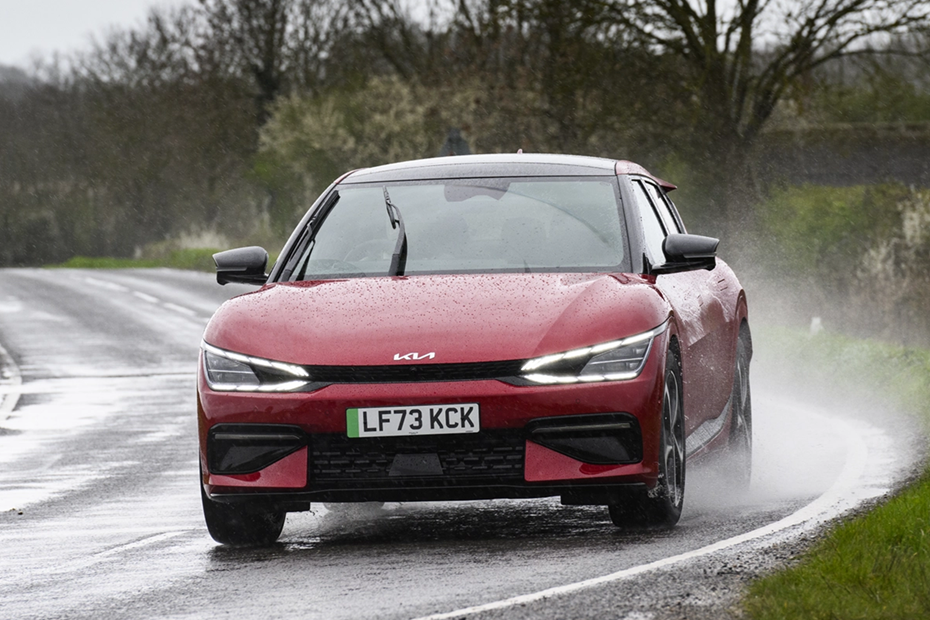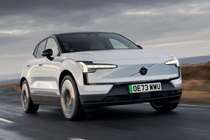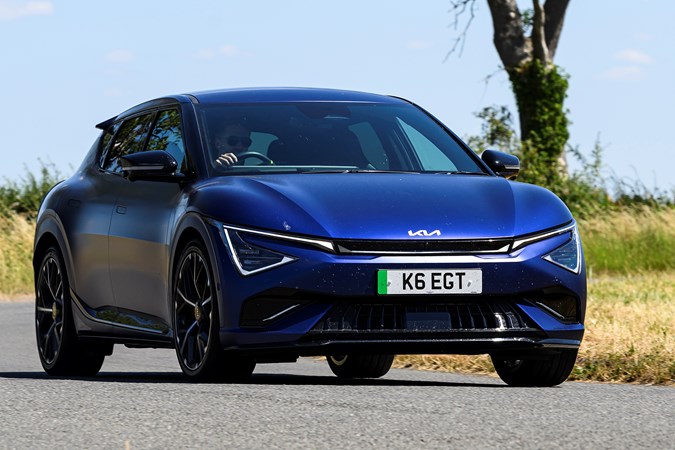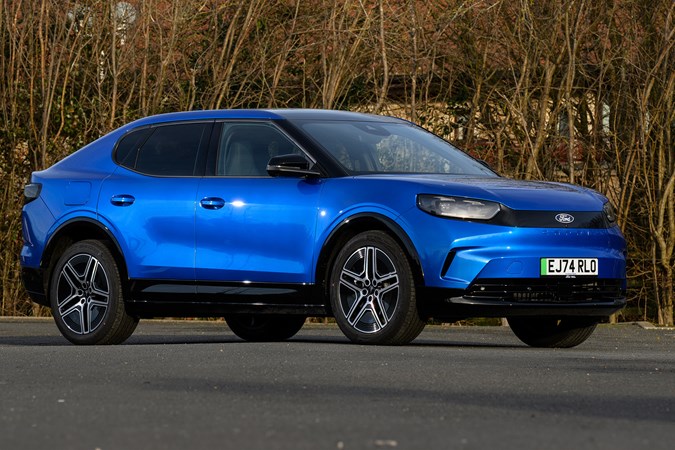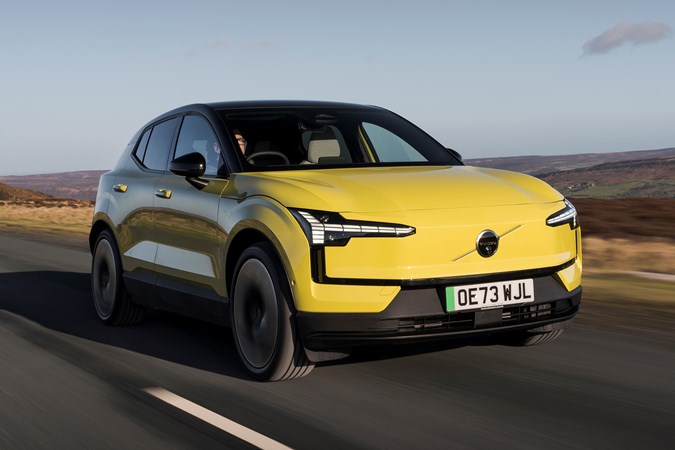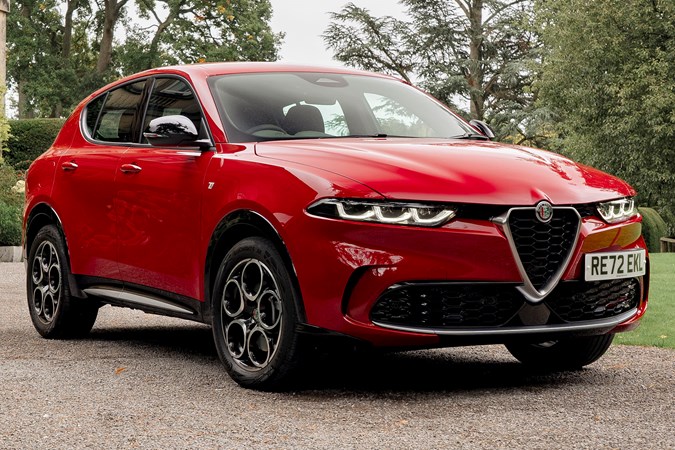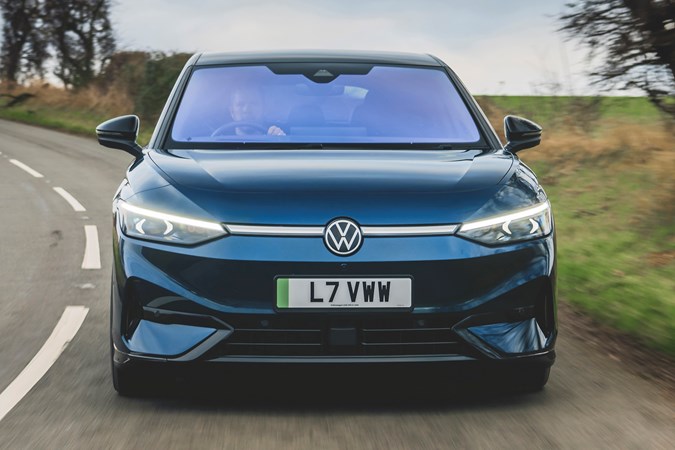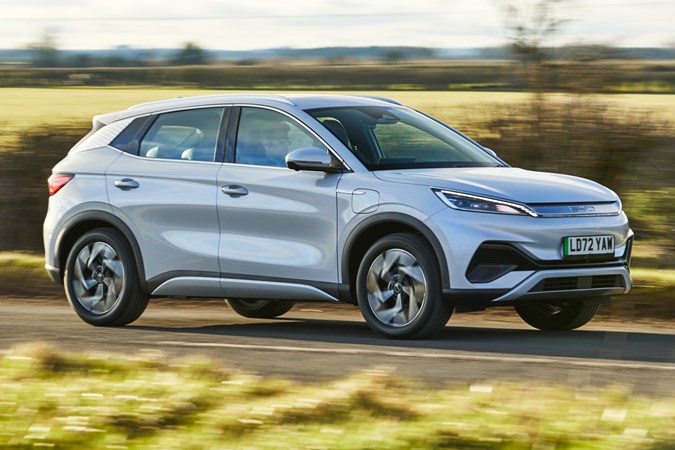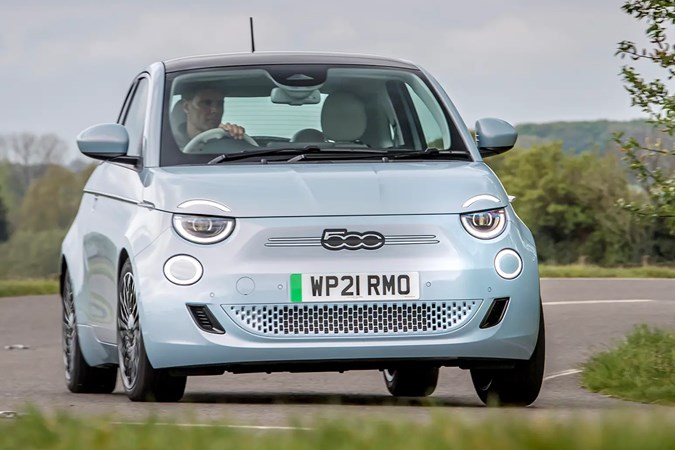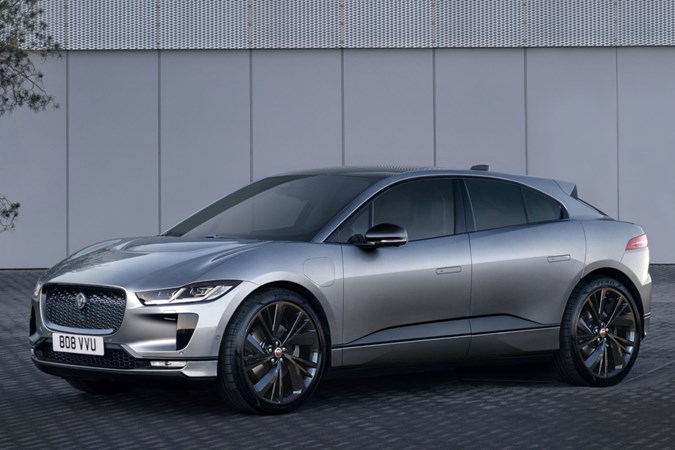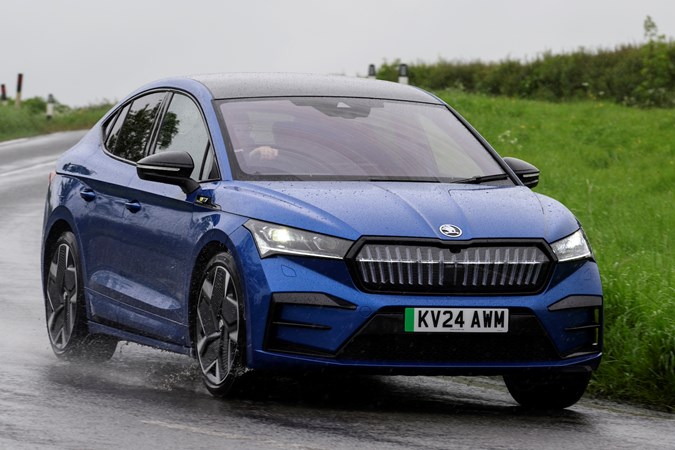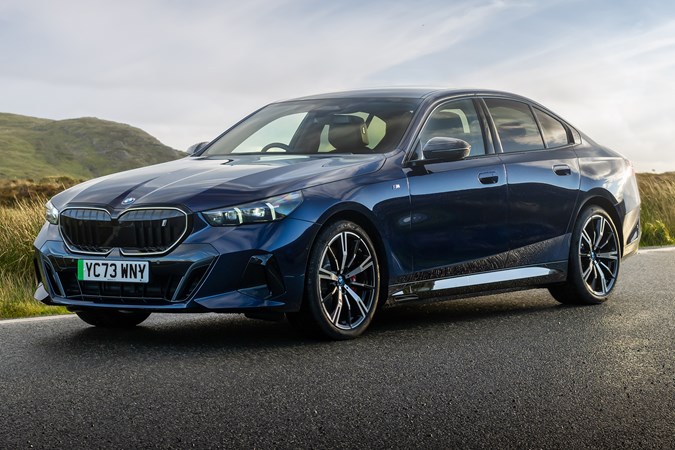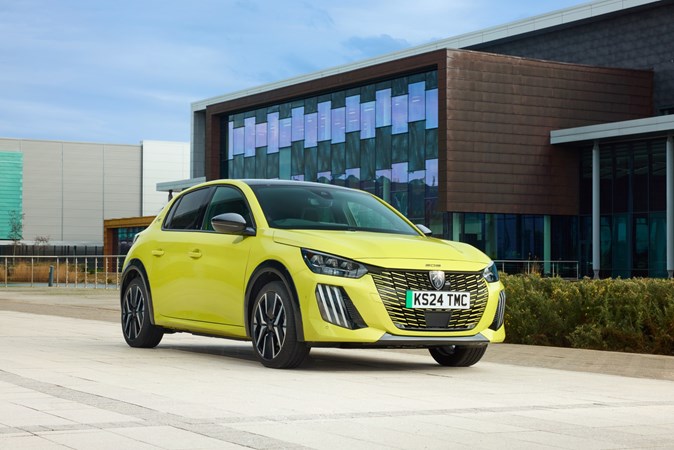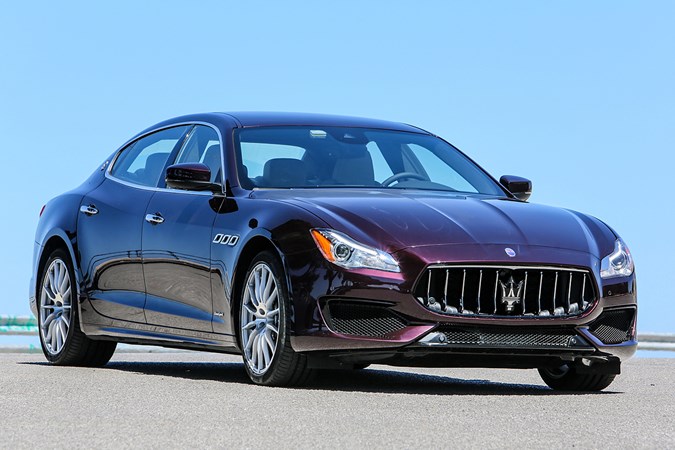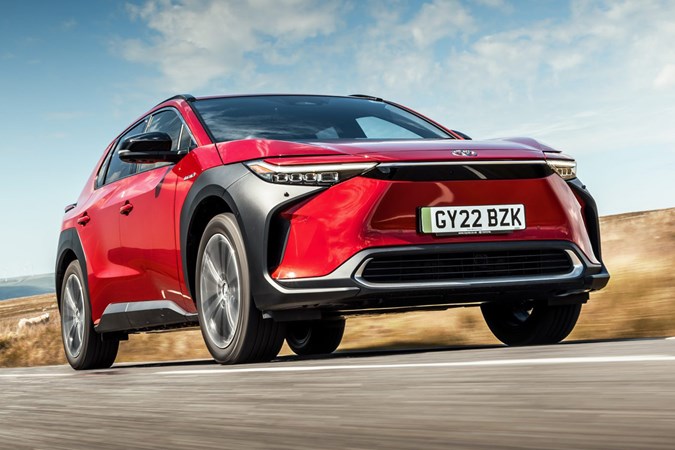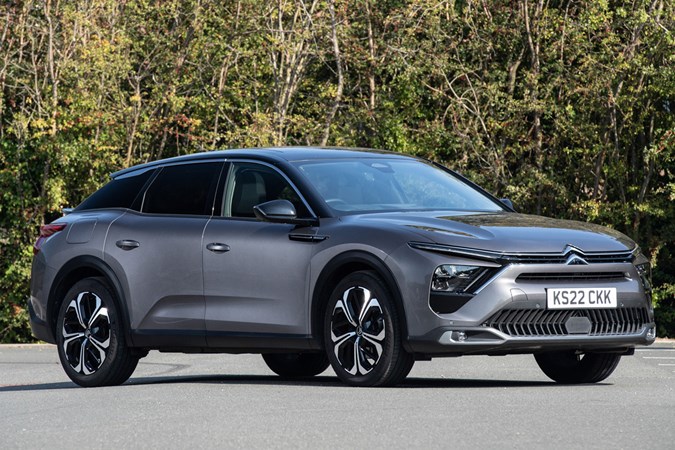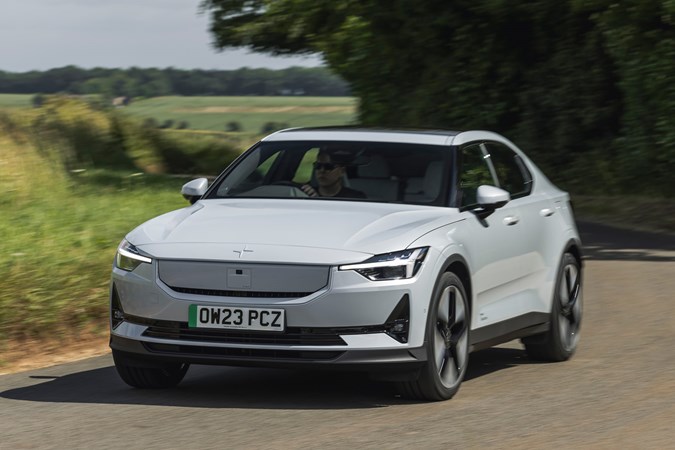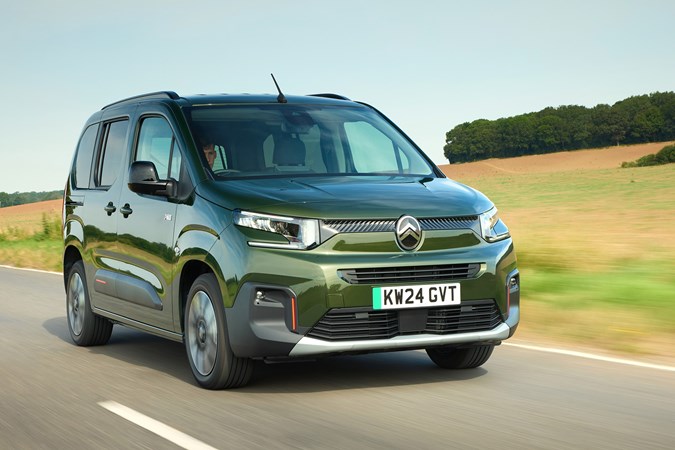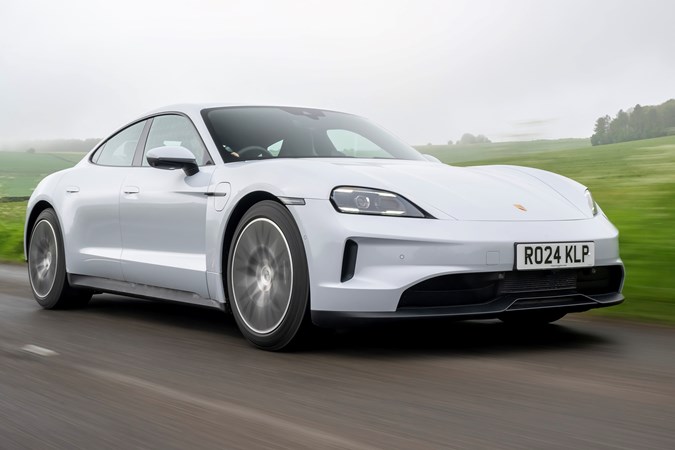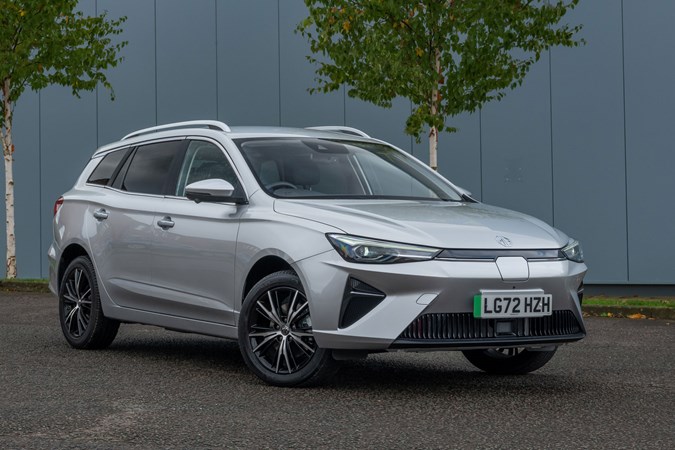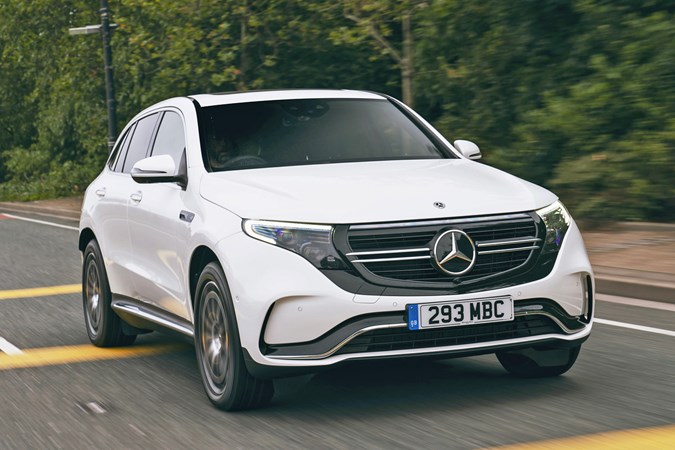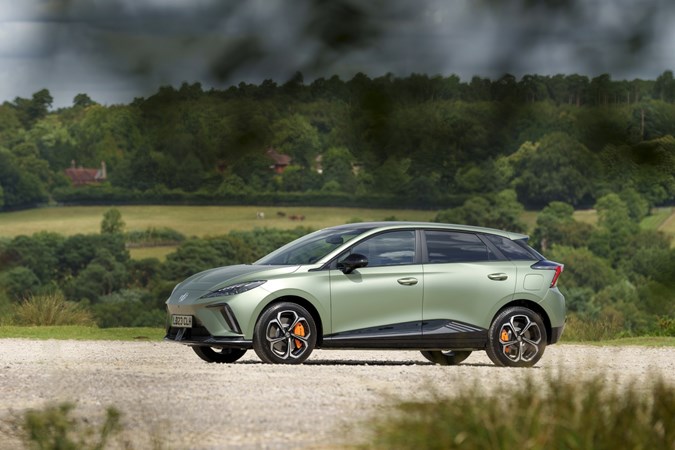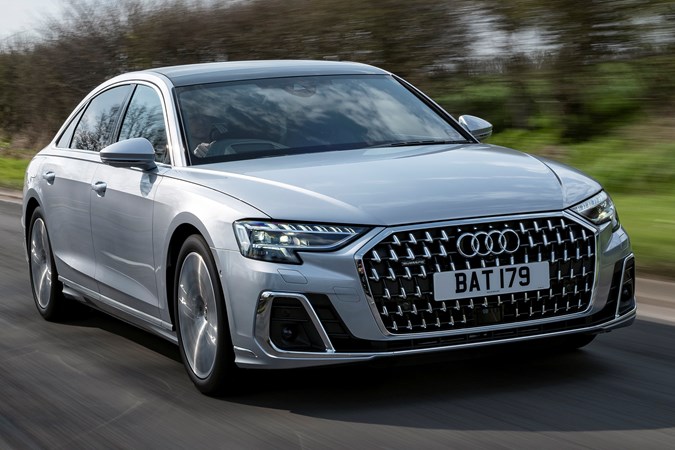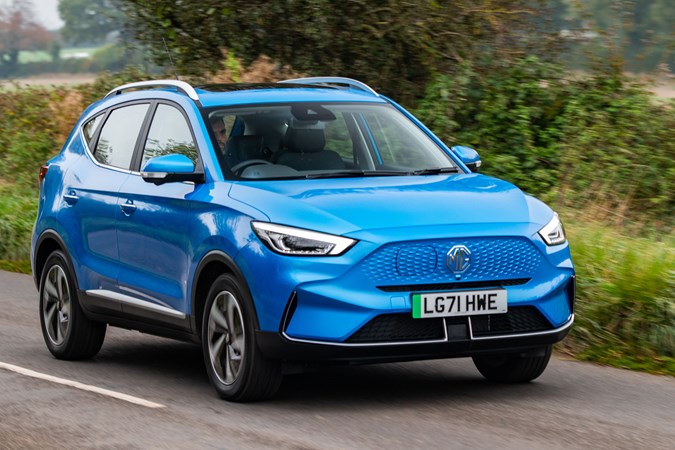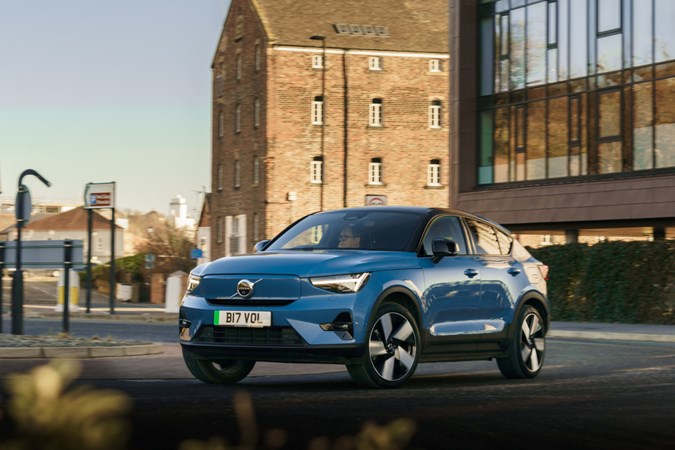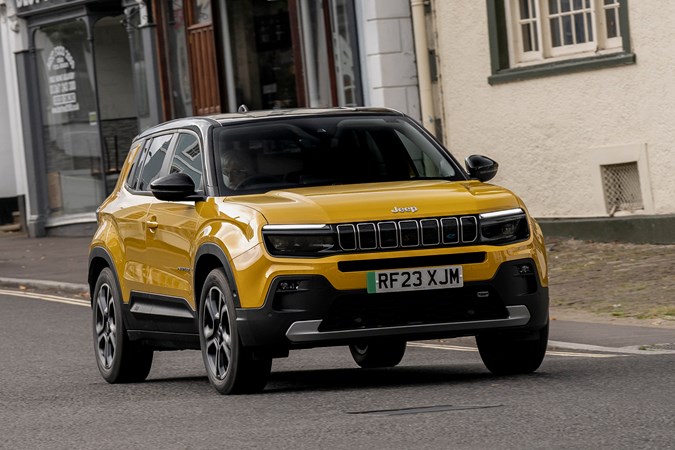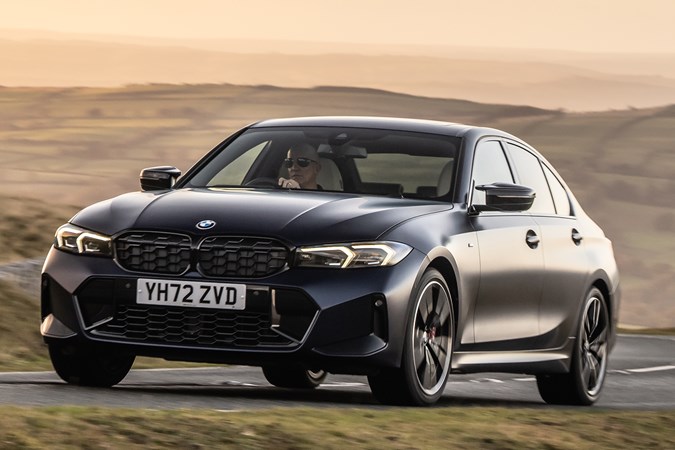Every Friday, Car buying Editor Ryan Gilmore brings you his pick for the best used car deal on the market, a nearly-new bargain that could save you thousands over buying new. With this insider knowledge, we’ll help you get a newer car for far less than you might expect.
The used market is packed with low-mileage cars at tempting prices. But at Parkers, we go further. We combine trade-only insights, unrivalled car valuations data, and decades of car-buying expertise to uncover the very best deals out there, just for you.
The cars we’re highlighting are tracking cheaper than average right now, based on one-year-old examples with around 10,000 miles on the clock. That means there’s no need to worry about MoT tests or age-related gremlins, as these cars are almost factory-fresh and, unless stated, still carry a manufacturer warranty. You might even get that elusive new-car smell thrown in for free.
So instead of leasing brand-new car, why not consider going secondhand? These lightly-used examples could be even more pocket-friendly, especially if you’re a cash buyer planning to keep your car longer than usual.
Want to know what’s hot in the trade this week?
The new car market may be evolving, but the used market is where some of the biggest shockwaves are being felt, especially for electric vehicles. CAP reveals EV values have plummeted nearly 69.7% since September 2022, leaving a glut of used EVs at jaw-dropping discounts.
While these collapsing values spell pain for the industry, CAP insists there are ‘great used EV buys to be had’ for savvy consumers, and we’d agree. Meanwhile, average used car prices dropped a modest 0.6% between June and July 2025, suggesting some stability away from electric cars.
So no surprise this week’s nearly-new star is once again powered by batteries…
Editor’s used car deal of the week
From £30,000
All of this makes it a tempting pick, and the first-year deprecation makes it something of a bargain. From the base model to the ferocious 585hp EV6 GT, prices for a one-year-old example start at about £30,000 and peter out just north of £40,000. Older examples are even more affordable, the cheapest I've come across was only £15,500 and would still be covered by Kia's generous seven-year warranty.
If you are tempted, note that the EV6 has proven slightly more troublesome than we'd expect from a Kia. The 12V battery system is prone to draining if the car isn't used for a few days, a common issue with Kia EVs. Phantom inputs on the touchscreens have been reported too. Spooky.
To find out more, read our full Kia EV6 review
Warranties left on a one-year-old Kia EV6:
General: Six years
Paintwork: Four years
Battery: Seven years/100,000 miles
Pros
- Impressive real-world range
- Superfast charging technology
- Strong performance across the line-up
Cons
- Firmer ride than its rivals
- Lack of physical cabin controls
Other great nearly-new bargains to watch out for
From £25,000
Prices start north of £40,000 and quickly swell for the larger battery and optional all-wheel drive. With a few miles on the clock, these are far more affordable, with plenty of well-spec’d Capris hovering around the £30,000 mark. Some examples are already dipping below that, with the higher-mile, lower spec models priced at just £25,000.
There’s a lot of Volkswagen technology lurking under the Blue Oval badge, which poses some reliability concerns. The Capri shares its platform with models like the Skoda Enyaq and Cupra Tavascan – both of which suffered problems our during long-term tests. We don’t have any owner reviews for the Capri just yet, but we’re keeping an eye out to see if Ford has managed to iron out these issues.
To find out more, read our full Ford Capri review
Warranties left on a one-year-old Ford Capri:
General: Two years
Rust: Four years
Paintwork: Two years
Battery: Seven years/100,000 miles
Pros
- Big boot and spacious interior
- Generous equipment levels
- Better to drive than many rivals
Cons
- Expensive compared with rivals
- Unimpressive efficiency and a heat pump is optional
From £25,000
The interior, while smartly trimmed and minimalist, lacks physical buttons for essential functions like the headlights, door mirrors, and climate controls – all of which are controlled via the touchscreen. The boot is on the small side, he ride unsettled, and there’s no driver’s display, meaning the central screen is your only source of critical driving information. Perhaps these irritations explain why one-year-old examples are already available from just £25,000 – typically mid-range Plus models (£33,660) with the extended-range battery (a £4,200 option), offering an official range of up to 295 miles.
We don’t currently have an owner's review of the Volvo EX30 and haven’t had the opportunity to live with one over an extended period. However, we do know that early models suffered from catastrophic software issues – a major concern in such a tech-centric car. There were reports of charging failures, infotainment crashes, and nonfunctioning driver assistance tech – it was so bad that full refunds were offered. While these problems have since been resolved, they don't exactly reflect the level of quality typically associated with the Volvo name.
To find out more, read our full Volvo EX30 review
Warranties left on a one-year-old Volvo EX30:
General: Two years
Corrosion: 11 years
Paintwork: Two years
Battery: Seven years/100,000 miles
Pros
- Great value compared with rivals
- Impressive performance for the money
- Premium look and feel
Cons
- All-touchscreen interior
- Not the most efficient
From £27,000
The Tonale is available as a mild or plug-in hybrid, both of which have their benefits and drawbacks. The mild hybrids will be cheaper on the forecourt but can be clunky at low speeds. The plug-in hybrid model sacrifices a hefty 115 litres of boot space, but it nets you 40 miles of pure electric power and a claimed mpg of 217mpg on the WLTP cycle with a charged battery. It's more expensive to buy new, but depreciates quicker which makes it the clever used pick when combined with the potenital economy.
If you know Alfa Romeo's history, you'll expect the list of Tonale issues to be as long as your arm. Thankfully, the biggest reported problem with the Tonale is the 12V battery pack going flat, so be sure to stock up on a battery charger if you're not using it daily. Interior rattling and small electrical gremlins aren't uncommon but should be irritating rather than debilitating. We've only got the one owner review for a Tonale, but it's for the plug-in hybrid and four stars is nothing to be sniffed at.
To find out more, read our full Alfa Romeo Tonale review
Warranties left on a one-year-old Alfa Romeo Tonale:
General: Two years
Paint: Two years
Corrosion: Seven years
PHEV battery: Seven years/100,000 miles
Pros
- Striking looks
- Premium interior
- Excellent roadholding
Cons
- Very light steering
- PHEV model has small boot
From £31,000
Lightly used examples are a lot more pocket-friendly thanks to a helpful dollop of depreciation, which the ID.7 an easily recommendable used pick. I’ve seen prices as low as £31,000 for a low-mileage Pro Match example (the entry-level ID.7). Our advice would be to look for a Pro Match S and its 87kWh battery pack, good for an official driving range of 436 miles. We’d also recommend skipping the GTX and its extra poke, the regular ID.7 is quick enough and will do significantly more miles on a charge.
There aren’t any owner’s reviews for the ID.7 yet but we’re yet to find any faults with the long-term ID.7 Tourer we’re currently running; in fact, we’re absolutely loving it. Software bugs are rearing their ugly heads in more VW products these days, and the ID.7 isn’t immune. We’ve come across reports of freezing infotainment screens, the odd charging glitch and a few reports of the automatic windscreen wipers having a mind of their own. Still, for such an accomplished EV, this price is a steal.
To find out more, read our full Volkswagen ID.7 review
Warranties left on a one-year-old Volkswagen ID.7:
General: Two years remaining
Paintwork: Two years remaining
Rust: 11 years remaining
EV battery: Seven years remaining
Pros
- Long battery warranty
- Spacious, tech-filled interior
- Smooth, quiet and comfortable
Cons
- Limited dealer network for EV expertise
- Real world driving range drops in winter
From £21,750
Standard equipment includes an interesting rotating touchscreen, heated seats, a heat pump and a suite of safety systems. It feels more premium inside than a Vauxhall Mokka Electric or MG ZS EV, and you won’t be left wanting for tech. The real-world range of 200 miles or so from the 60.5kWh battery makes it more than capable as a family car – especially if you have regular access to home charging.
BYD offers generous warranties, and the Atto 3 has so far proved to be reliable in use. Some owners have reported the infotainment system can feel clunky, but it’s regularly updated via software patches. As a nearly-new buy with minimal compromises and maximum savings, the Atto 3 makes a strong case for itself.
To find out more, read our full BYD Atto 3 review
Warranties left on a one-year-old BYD Atto 3:
General: Four years remaining
Paintwork: Three years remaining
Rust: Five years remaining
EV battery: Seven years remaining
Pros
- Huge saving over new
- Generous equipment as standard
- Spacious and well-finished interior
Cons
- Infotainment can be fiddly
- Range not class-leading for the size
From £13,500
It'll work best as a secondary car, or primary car for city dwellers with a home EV charger. The range isn't world-beating, but it doesn't need to be. Even the smaller battery offers an official WLTP driving range of 118 miles, more than enough for second car duties.
Quality-wise, no major issues have been reported besides a handful of software glitches and the occasional squeak or rattle. We ran a used 500e for four months and suffered no reliability qualms at all, only the small boot size proved a nuisance. For a car that'll still be covered under a plethora of warranties, it's a bargain.
To find out more, read our full Fiat 500e review
Warranties left on a one-year-old Fiat 500e:
General: Two years
Paintwork: Two years
Rust: Seven years
EV battery: Seven years/100,000 miles warranty
Pros
- Stylish inside and out
- Quick and fun to drive
- Long range for a small car
Cons
- Tiny boot space
- Short range on the smaller battery
From £29,000
And we're in luck; we've seen plenty of practically new I-Paces with trade valuations as low as £29,000 – a £44k loss over 12 months. They all sport nice styling, a roomy and luxurious interior, and are genuinely enjoyable to drive. However, it's also true that the platform and tech are ageing now, and the public charging setup isn't up to scratch.
The biggest worry is the quality and reliability quarrels. We've seen many horror stories about the fit and finish and some very nasty stories about the charging system. The charging port doors can fail and stick, the charging rate is unacceptably slow with some public chargers, and the 12V battery system can suffer from drains. Dealer support is nothing to shout about, either.
To find out more, read our full Jaguar I-Pace review
Warranties left on a one-year-old Jaguar I-Pace:
General: Two years
Corrosion and paintwork: Two years
Battery: Seven years/100,000 miles
Pros
- Nice to drive
- Roomy and stylish interior
- Strong performance
Cons
- Well-documented reliability concerns
- Real-world range nowhere near claims
From £22,000
Another area in which the big Skoda scores well is value. Prices now start at just under £40,000 for a new base model, but one-year-old Enyaqs can be almost half that – we've spotted low-mileage 24-plate examples from just £22,000. Best of all, there doesn't seem to be much of a price premium for models fitted with the desirable larger 82kWh battery, which means around 280 miles on a single charge should be realistically achievable.
The small collection of owner reviews aren't exactly glowing when it comes to reliability, with reports of flat batteries and one Enyaq that wouldn’t start. We've also run two models – an Enyaq iV and a vRS coupe – as long-term test cars, covering nearly 20,000 miles between them. The former was excellent in terms of reliability, while the latter suffered from a sticky charger flap and a drained 12V battery.
To find out more, read our full Skoda Enyaq review
Warranties left on a one-year-old Skoda Enyaq:
General: Two years
Corrosion: 11 years
Paintwork: Two years
EV battery: Seven years/100,000 miles
Pros
- Roomy interior, big boot
- Comfortable ride
- Great value for money
Cons
- It's not fun to drive
- Some well-documented software issues
From £42,000
But depreciation hasn't been kind to electric executive cars, and the i5 can't escape this fate, no matter how good it is. We've seen entry-level models for as low as £42,000, far more palatable. We've previously questioned whether the i5 is worth the price premium against the equally excellent Kia EV6; a lightly used example quells that concern.
We don't currently have any owner reviews for the BMW i5, but if it behaves like other electric BMWs, we wouldn't worry about reliability being a problem. The occasional infotainment bug has been reported on forums, but BMW's system is one of the more reliable on the market.
To find out more, read our full BMW i5 review
Warranties left on a one-year-old BMW i5:
General: Two years
Corrosion: 11 years
Paintwork: Two years
EV battery: Seven years/100,000 miles
Pros
- Excellent to drive
- Stunning build quality
- Competitive range
Cons
- Feels huge, especially in town
- Mixed bag of driver assistance tech
From £14,000
Aside from dipping a toe in with a few thousand electric 106s in the early '90s, the e-208 is Peugeot's first proper crack at an electric supermini. The results are mixed, especially in the face of the new crop of electric superminis like the Renault 5 E-Tech and Hyundai Inster. It's easy to drive and well-equipped, but the ride is unsettled and not very good value for money when new.
It makes much more sense as a nearly new car instead. Our owner reviews are pretty positive, with the biggest issue being a notable knock to battery range in colder weather. The divisive i-cockpit dashboard layout is also worth a mention. The steering wheel is small and set low, while the dials are set high, which can mean finding a good driving position can be a pain. Definitely try before you buy.
To find out more, read our full Peugeot e-208 review
Warranties left on a one-year-old Peugeot e-208:
General: Two years
Paintwork: One year
Rust: 11 years
EV battery: Seven years/100,000 miles warranty
Pros
- Stylish inside and out
- Well equipped
- Easy to drive
Cons
- Unsettled ride comfort
- Restrictive driving position
From £60,000
We're looking at the final iteration of the Maserati Quattroporte, known as the VI. It was introduced to the UK in 2016 and sold in small numbers. It's not as immediately pretty as earlier models, but it retains all the usual Maserati handling and performance characteristics. It's a proper driver's car and came with a sweet choice of engines – either a V6 or V8 petrol for the very last models.
Naysayers will look at one and joke about shoddy Italian electrics, build-quality woes, and amateur welding. Mercifully, this generation of Quattroporte isn't too bad. The biggest issue we encountered was with the interior quality. Reports of sticking buttons, warping leather, and rattles are plentiful, which takes the shine off a luxury car. Air suspension on more expensive models can leak and is best avoided. It's also worth remembering that running costs will be high.
To find out more, read our full Maserati Quattroporte review
Warranties left on a one-year-old Maserati Quattroporte:
General: Three years
Powertrain: Three years
Rust: Three years
Pros
- Immense presence
- Air of exclusivity
- Sporty driving experience
Cons
- Interior quality leaves a lot to be desired
- Harsher ride than competition
From £24,000
From just £24,000, you can enjoy a lightly used example of a very comfortable family-sized EV with a wonderfully thought-out infotainment system and the quality level you'd expect from a car sporting a 10-year warranty (if you service it annually with Toyota). The catch? The battery range is mediocre, and it's far from the most efficient EV available today.
Because it's a Toyota, reliability records are tungsten levels of tough, with very few problems reported. The biggest bugbear with the bZ4X – other than the battery range – is the small boot and ergonomic quirks that sit at odds with Toyota's usually logical design. There's no glovebox for a start, and the lack of a rear wiper is an irritation in the rain.
To find out more, read our full Toyota bZ4X review
Warranties left on a one-year-old Toyota bZ4X:
General: Nine years
Corrosion: 11 years
Paintwork and surface rust: Two years
Battery: Seven years/100,000 miles
Pros
- Longest warranty in the business
- Excellent infotainment
- Very comfortable to drive
Cons
- Indifferent range in cold weather
- No rear wiper or glovebox
From £17,000
We like the Citroen C5 X here at Parkers; it's an excellent large family car if you're after something that's not a fully-fledged SUV. The interior is well-equipped, mostly spacious and even lavish – while the boot is generously sized. It's a little roly-poly if you come from the world of stiffer cars, but it never wallows in the bends. Our advice? Go for a plug-in hybrid; the regular hybrid lacks performance.
As a car that didn't sell in huge numbers, the C5 X doesn't have the same information about reliability. There are a handful of forum posts – usually related to infotainment glitches – but we're yet to see a Parkers owner review for this big Citroen. We did run one on a long-term test and had an overwhelmingly pleasant experience.
To find out more, read our full Citroen C5 X review
Warranties left on a one-year-old Citroen C5 X:
General: Two years
Corrosion: 11 years
PHEV Battery: Seven years/100,000 miles
Pros
- Comfortable seats and ride
- Economical, punchy engines
- Plug-in hybrid for low tax
Cons
- Limited model range
- Rear headroom a little tight
From £24,000
It's also been a strong performer for fleets, which means there are loads to pick from on used forecourts, perhaps explains why used prices are so tempting, there are loads to pick from on forecourts. For a car that starts north of £40,000, we've spotted one-year-old examples going for just £24,000. A long-range, dual motor example with its awesomely fast acceleration can be had from just £30,000. That is a lot of performance for your money.
There are a few issues with the Polestar 2, hence our score of three out of five. When we tested it, we thought the ride quality was simply too firm and harsh. Then, when we look at our owner reviews, we find that the 2 can be hit or miss reliability-wise. There are a smattering of strong reviews, but the lower scores mention numerous software issues that sometimes leave the car totally unusable. It's a nice car, but inspect it wisely.
To find out more, read our full Polestar 2 review
Warranties left on a one-year-old Polestar 2:
General: Two years
Corrosion: 11 years
Battery: Seven years/100,000 miles
Pros
- Tidy handling
- Dual motor’s rapid performance
- Classy interior
Cons
- Ride comfort is unacceptable
- Head- and legroom in rear not exactly huge
From £16,000
Just £16,000 will get you a one-year-old example of an e-Berlingo, complete with sliding doors, a massive boot, ample room for five, and a comfortable ride. For about an extra £1,000, an e-Berlingo XL offers seven seats with no compromise for passenger space. It's not the last word in driving dynamism, and we won't pretend it's a cool car. But practicality rarely is; look at cargo shorts as a non-automotive example of this.
We don't have any owner reviews of the e-Berlingo on our site, but we did run an ex-demo example on a long-term test a few years ago and came away with a largely positive impression. The range suffered in colder weather, and the over-the-air updates proved irksome, but its interior space and value were extraordinary. Reliability-wise, there are no headaches to report, the underpinnings are used in electric vans from Fiat to Peugeot to Vauxhall and are proving reliable.
To find out more, read our full Citroen e-Berlingo review
Warranties left on a one-year-old Citroen e-Berlingo:
General: Two years
Corrosion: 11 years
Battery: Seven years/100,000 miles
Pros
- Gigantic boot
- Spacious for passengers
- Relaxing to drive
Cons
- Relatively short rangImage will be a problem for many
- Image will be a problem for many
From £47,000
Even an entry-level Taycan offers top-drawer performance that can hang with the best sports cars, but if that's not enough, a Turbo GT offers physics-bending acceleration. It's deceptively comfortable, too and easily able to whisk four occupants in genuine serenity. It's even efficient, a 300 mile range from a charge should be possible when the accelerator isn't pinned to the carpet.
There's only one Taycan owner review on our site, but reliability was given five out of five stars. Aside from a handful of infotainment glitches, 2024 Taycans look to have ironed out the earlier quality and reliability woes. However, it is worth noting that tyres are expensive and will need changing more regularly than you might expect, and it can be hard to find an 800-volt public charger to achieve the Taycan's fastest charging speeds.
To find out more, read our full Porsche Taycan review
Warranties left on a one-year-old Porsche Taycan:
General: Two years
Corrosion: 11 years
Paintwork: Two years
Battery: Seven years/100,000 miles
Pros
- Very fast and fun to drive
- Charges quickly
- Long driving range
Cons
- Can't completely disguise its weight
- Fast charging requires fast chargers
From £12,000
It's a perfectly serviceable electric estate with a low price tag, decent range and generous equipment levels. It's not that practical for an estate with its awkward loading lip and clunky folding seats, but it becomes the class leader by default when it's the only budget electric estate.
A peruse through our owner reviews section shows a general positivity towards the MG5 EV, with the range and low running costs all counting in the car's favour. The biggest criticisms land firmly on the infotainment and interior. The former is clunky and crash-prone, and the latter is dull and finished to a questionable quality. Remember too, there are grumblings about MG parts supply issues.
To find out more, read our full MG5 EV review
Warranties left on a one-year-old MG5 EV:
General: Six years
Paint: Two years
Corrosion: Six years
EV battery: Six years
Pros
- Decent battery range
- Plenty of standard kit
- Agreeable ride and handling
Cons
- Uncomfotable seats
- Not that practical for an estate
From £32,000
For as little as £32,000, you can buy a well-made, comfortable, and neatly trimmed EV with all the badge kudos the three-pointed star offers. It is worth noting however that it doesn't have the same spacious interior as rivals owing to its shared platform with the conventionally-powered GLC.
It's also an earlier crack at the EV formula, so don't expect the latest battery technology. Battery tech has come a long way since the EQC entered production, so don't be surprised by the longer charging times and weaker range. Fears of battery degradation are happily unfounded. We haven't found any major mechanical problems with the EQC, which is reassuring news.
To find out more, read our full Mercedes-Benz EQC review
Warranties left on a one-year-old Mercedes-Benz EQC:
General: Two years
Corrosion: 29 years
Battery: Seven years/100,000 miles
Pros
- Effortless acceleration and cruising
- Noise and vibration superbly suppressed
- Clever sat-nav eliminates range anxiety
Cons
- Very heavy – and feels it when you drive
- Not as spacious as some electric rivals
From £20,000
While the regular MG4 EV offers an enjoyable driving experience, the XPower doesn't cope well with that extra power. It loses the standard car's balance and doesn't inspire as much confidence in the corners.
That extra power also has a knock-on effect on battery range, which drops to 239 miles from the 281 miles the standard car can do. The MG4 EV has a questionable reliability record, primarily due to questions around parts supply that have loomed over MG for the past year. Definitely something to bear in mind.
To find out more, read our full MG4 XPower review
Warranties left on a one-year-old MG4 XPower:
General: Six years
Corrosion: Six years
Paintwork: Two years
Battery: Seven years/100,000 miles
Pros
- Brutal acceleration
- Cheaper than most petrol hot hatches
- Just as practical as a regular MG4
Cons
- Reduced driving range
- Uninspiring to drive
From £40,000
The Audi A8 is a lovely example of an executive car. While it may lack the outright space offered by rivals like the BMW 7 Series, it's still a supremely refined place to be. The interior is starting to show its age, but the quality feels eternal, and it's a classy, refined place to be.
If you do decide to buy one, be meticulous when checking everything works. The A8 is packed with fancy technology that'll be expensive to fix. Pillow-soft air suspension is an optional extra you may encounter; make sure it all works properly. Any warning lights or failure messages should make you walk away. It's a complex fix and costly once the car is out of warranty.
To find out more, read our full Audi A8 review
Warranties left on a one-year-old Audi A8:
General: Two years
Corrosion: 11 years
Paintwork: Two years
Pros
- Mild hybrid and plug-in hybrid drivetrains
- Semi-autonomous driving technology
- Super clean interior design
Cons
- Not as roomy as rivals
- Smaller boot than rivals
From £15,000
Parking a ZS EV on your driveway isn't going to make your neighbour's curtains twitch, but at this price for a one-year-old car, not much will. The interior quality and feel are more akin to an ageing hire car, and the insides don't soak up the scrapes and stress of family life as well as we'd like. It's also not an enjoyable car to drive.
But if you can live with the low-rent interior and bland road manners, it's a clever money car. Reliability records also look relatively positive, with small electrical gremlins rearing their ugly heads. In particular, the windows and DAB radio have been noted to stop working intermittently. Make sure they all work on any test drive.
To find out more, read our full MG ZS EV review
Warranties left on a one-year-old MG ZS EV:
General: Six years
Corrosion: Six years
Paintwork: Two years
Battery: Seven years/100,000 miles
Pros
- Exceptional value for money
- Up to 273-mile official electric range
- Five-star safety rating
Cons
- Low-rent interior
- Not exciting to drive
From £26,000
The battery range is good, if not Tesla levels of good. Upgrade to a twin-motor example, and you'll only be paying a few grand for 408hp and some seriously impressive performance. The problem? There are a plethora of high-riding electric coupes that offer a better overall package than the C40. It sits in the middle of the pack, overshadowed by cars like the Audi Q4 Sportback and even the Skoda Enyaq Coupe.
Reliability-wise, there is very little to go wrong. The motors and battery tech are pretty bombproof. The biggest concern we found for ownership is a small piece of triangular trim that occasionally catches when opening the rear doors. Add in the usual Volvo safety gubbins, and it looks even more tempting.
To find out more, read our full Volvo C40 review
Warranties left on a one-year-old Volvo C40:
General: Two years
Corrosion: 11 years
Paintwork: Two years
Battery: Seven years/100,000 miles
Pros
- Strong performance
- Good range figures
- Comfortable and stylish interior
Cons
- Fairly numb to drive
- Dreadful rear visibility
From £20,000
Boil off the rough-and-tumble exterior, and you're left with the same platform the Fiat 600e and Peugeot e2008 use, but the Avenger costs much more. In top-level Summit trim, you'd be looking at nearly £40,000 to pick one up new in 2024.
Other issues hold the Avenger back, too. The interior is cramped, and the ride is unsettled. Even some impressive off-road credentials aren't enough to save the Avenger. There is not much data available on reliability. Reports of software glitches and charging issues are starting to crop up now and again, though.
To find out more, read our full Jeep Avenger EV review
Warranties left on a one-year-old Jeep Avenger EV:
General: Two years
Corrosion: Six years
Paintwork: Two years
Battery: Seven year/100,000 miles
From £32,000
It's a plug-in hybrid, which means it can drive up to 37 miles on the 112hp electric motors alone. Paired with a petrol engine that produces 184hp for 252hp, the 330e offers respectable performance figures, especially when it only produces 39g/km CO2. With such low emissions, tax is also low, making the 330e exceedingly popular with fleets. As a result, forecourts are full of used examples.
While tax and economy are better than a standard 3 Series, there are a few tradeoffs. The boot is down 105 litres to just 375 litres because that's where the batteries live. It's marginally less agile than a standard 3 Series too. Reliability-wise, there's not much to report happily. The 330e doesn't have any notable issues, but there is the odd horror story here and there.
To find out more, read our full BMW 330e review
Warranties left on a one-year-old BMW 330e:
General: Two years
Corrosion: 11 years
Paintwork: Two years
PHEV tech: Five years/60,000 miles
Pros
- Up to 37 miles of electric range
- Precise steering and balanced handling
- Great efficiency and performance
Cons
- Smaller boot size
- Loses a little bit of poise
Frequently Asked Questions
-
Can I get a warranty on a used or nearly-new car?
As all of the cars we'll cover in this article are only a year old, a manufacturer's warranty should cover them. Warranties are often transferable for the secondhand market, but it's always worth double-checking. Some brands break down a warranty into different areas and offer different cover lengths. Rust and paintwork are fairly common examples of warranties that exceed the usual mechanical warranties. Electric vehicles will have an extra warranty on top of this for their exotic batteries and motor components; the industry standard is eight years/100,000 miles, which means a used EV should be a safe buy. For even more peace of mind, you can buy a used car warranty.
-
What to look for when buying a used car?
Every car is different, so make sure you do your research. For while most one-year-old cars should be in good health, it's always worth finding out about common issues. Whether it be small electrical gremlins, catastrophic engine defects, or bits that rattle, it's better to know of potential problems before you buy than to discover them afterwards. Your first port of call should be our expertly written used car reviews. We break down what a used car is like to live with, its specs, and those issue areas to look out for.
-
Can I finance a used car?
Of course. Financing is a popular way of paying for a used car, especially when they're a couple of years old and haven't depreciated to a fraction of the original price. The most popular route is Personal Contract Purchase (PCP), a form of financing that involves paying a deposit and monthly fees for a set period, with the option of a final balloon payment to buy the car outright. Hire Purchase (HP) is the old-fashioned way of buying a car. You split the price of the car down into monthly instalments, pay them, and, by the end of the contract, you've paid for everything.
-
Can I lease a used car?
You can lease a used car just as you would a new one. For a lower monthly sum of cash than PCP or HP, you'll be able to effectively rent a used car. This is the most cost-effective way of getting a car, but they're not the most common of deals to find, and you won't actually own the vehicle.
* Prices based on examples found on Parkers Cars for Sale, and limited to availability. Similar examples may be on offer. Data collected from CAP HPI.
Just so you know, we may receive a commission or other compensation from the links on this website - read why you should trust us.


